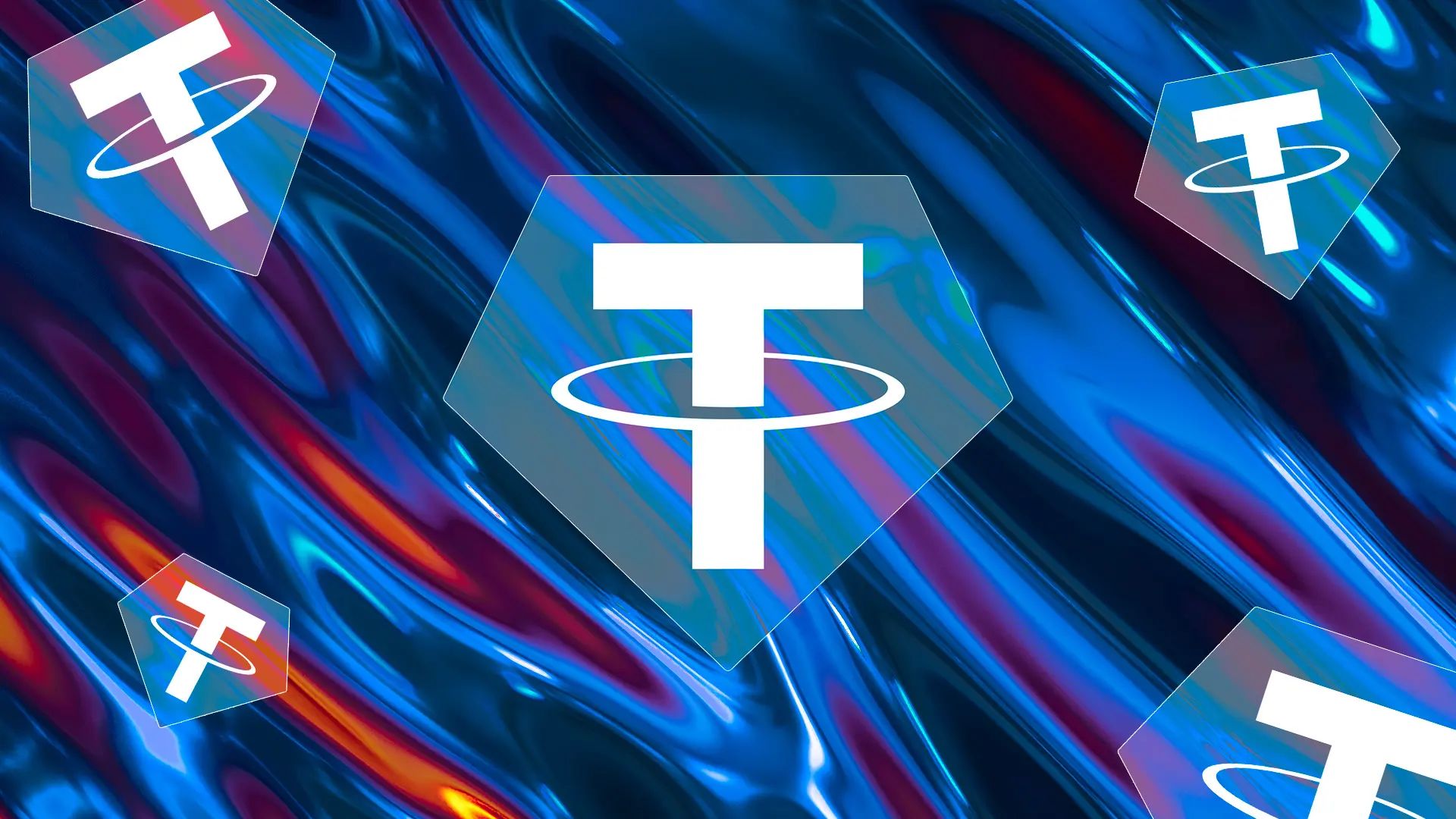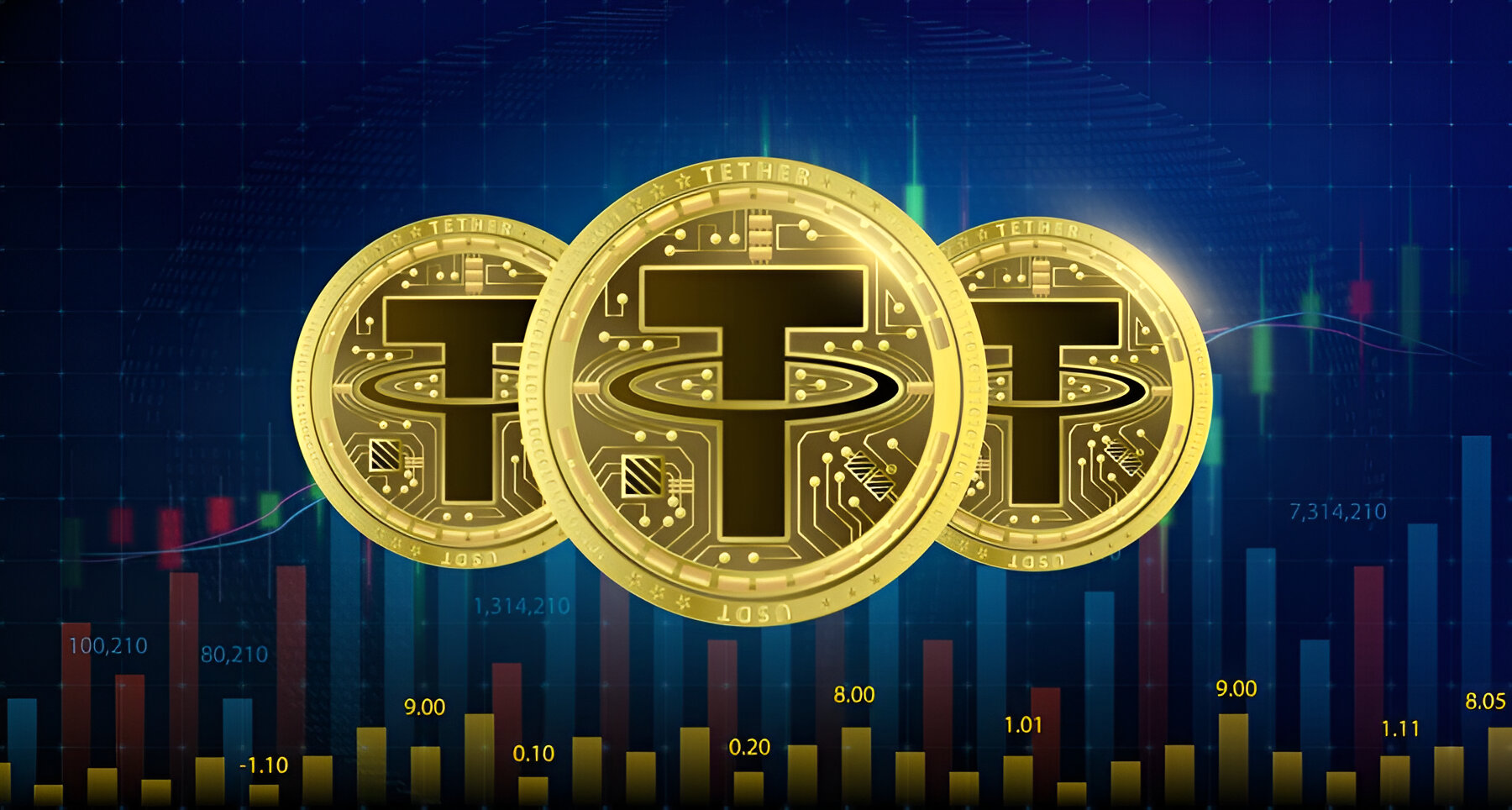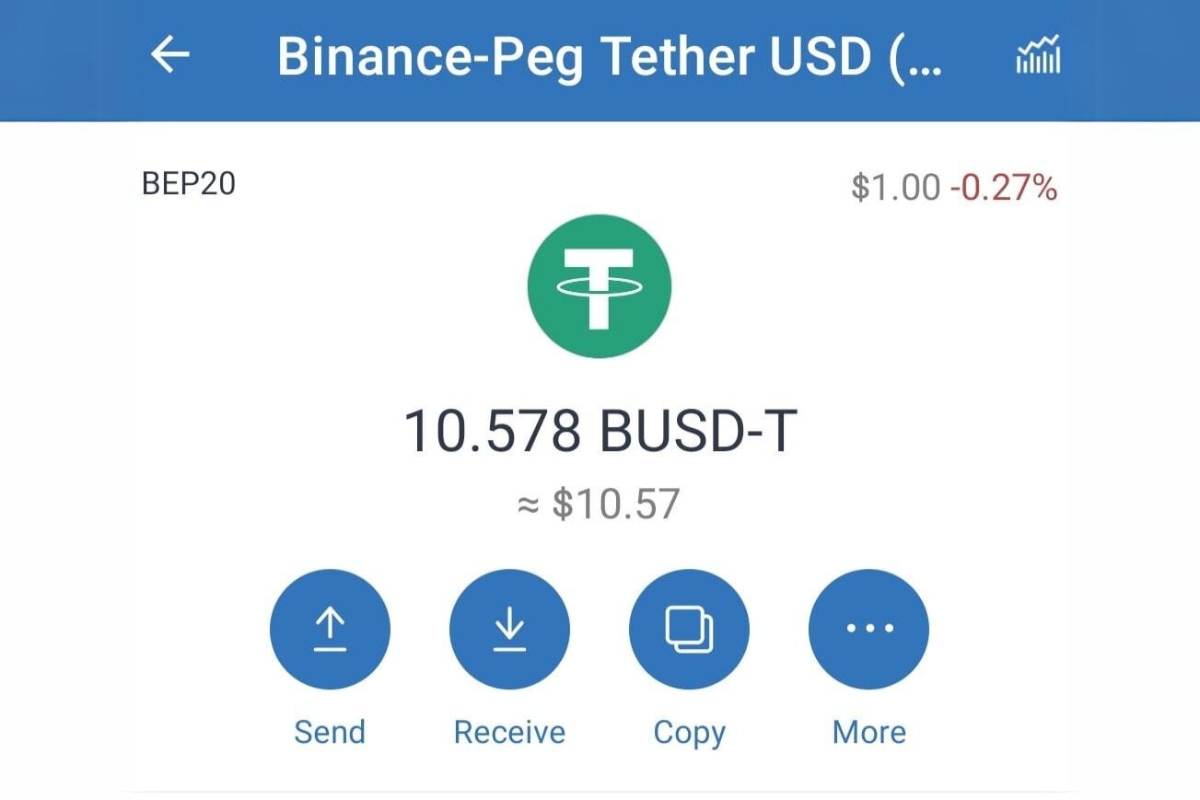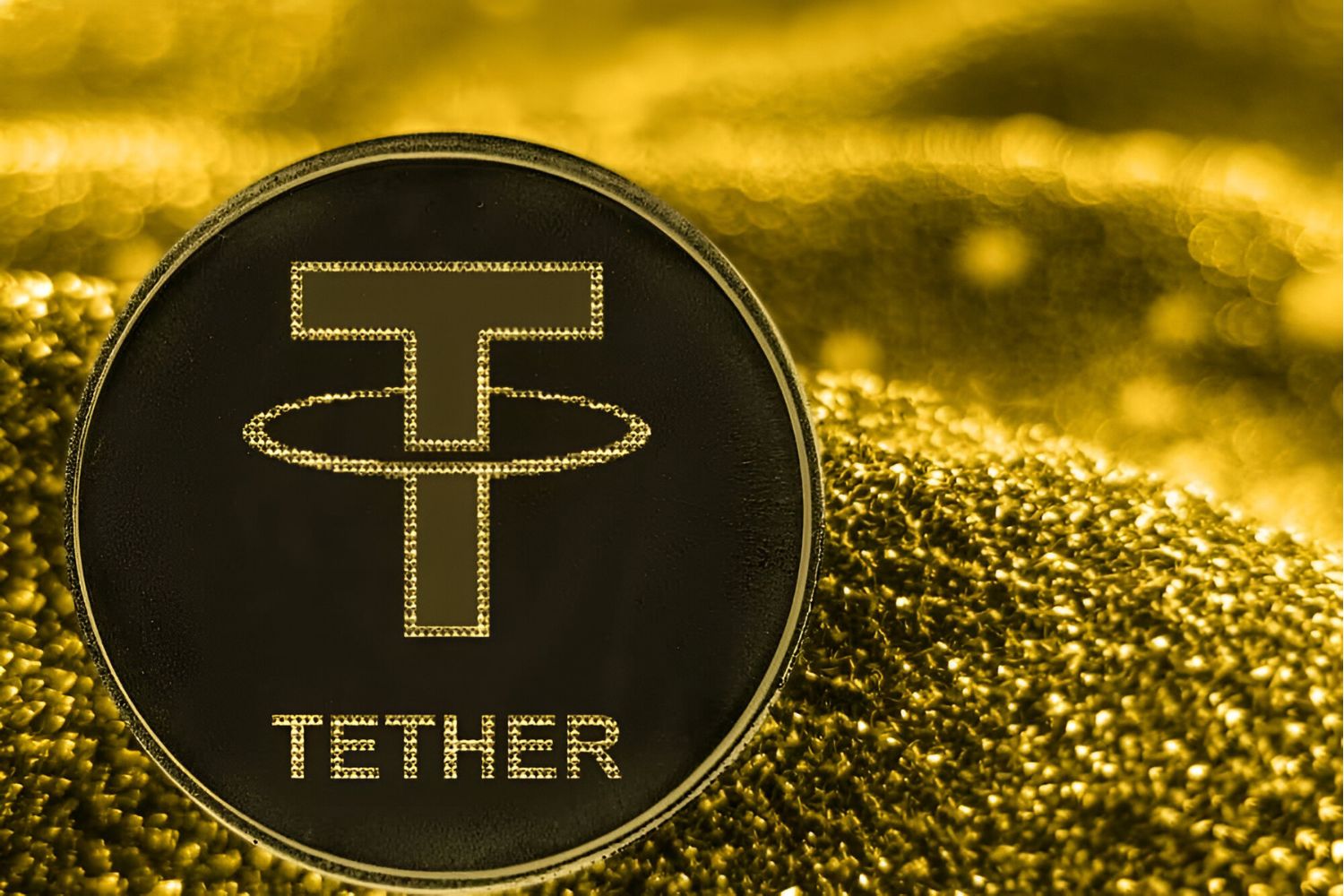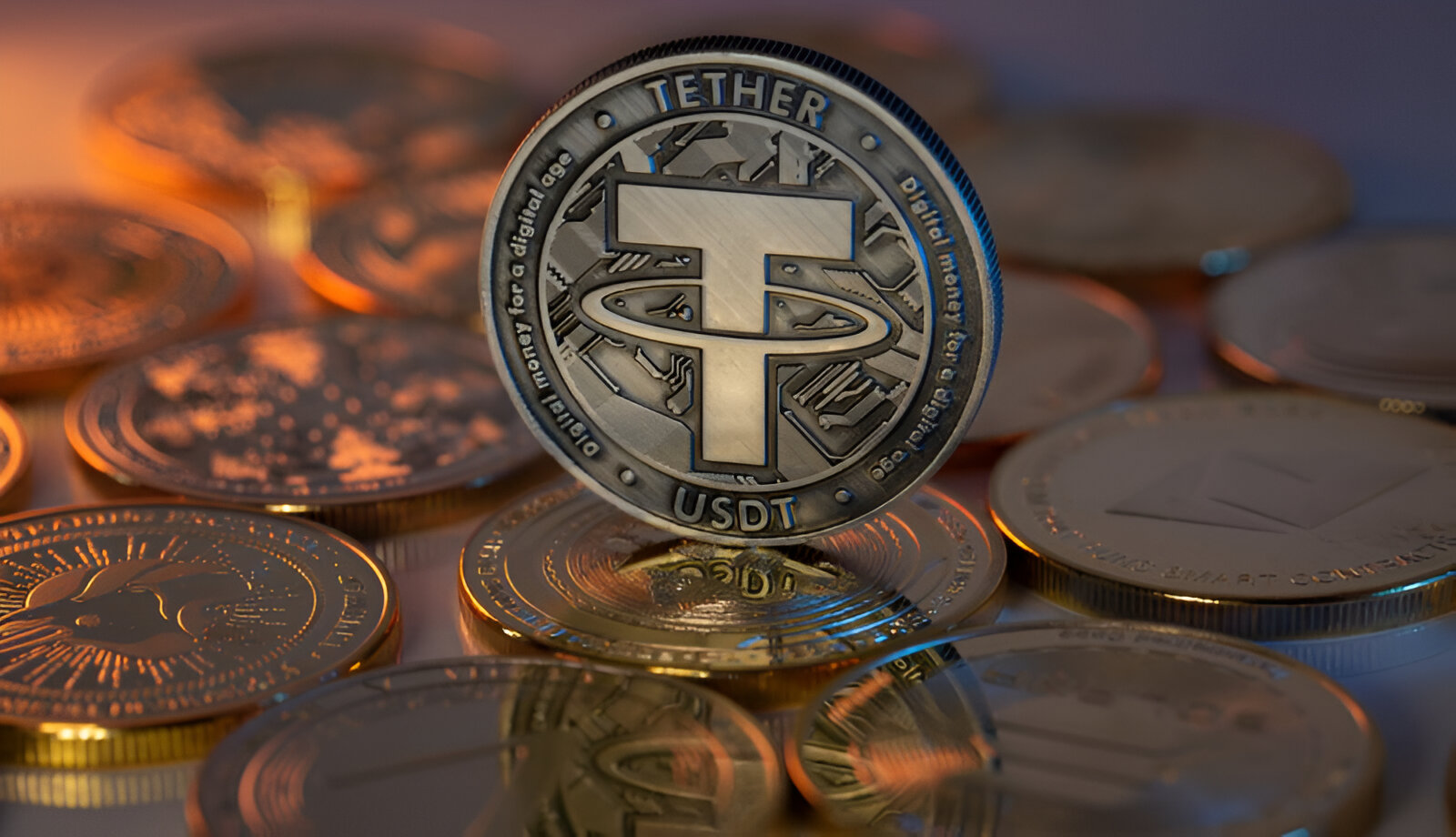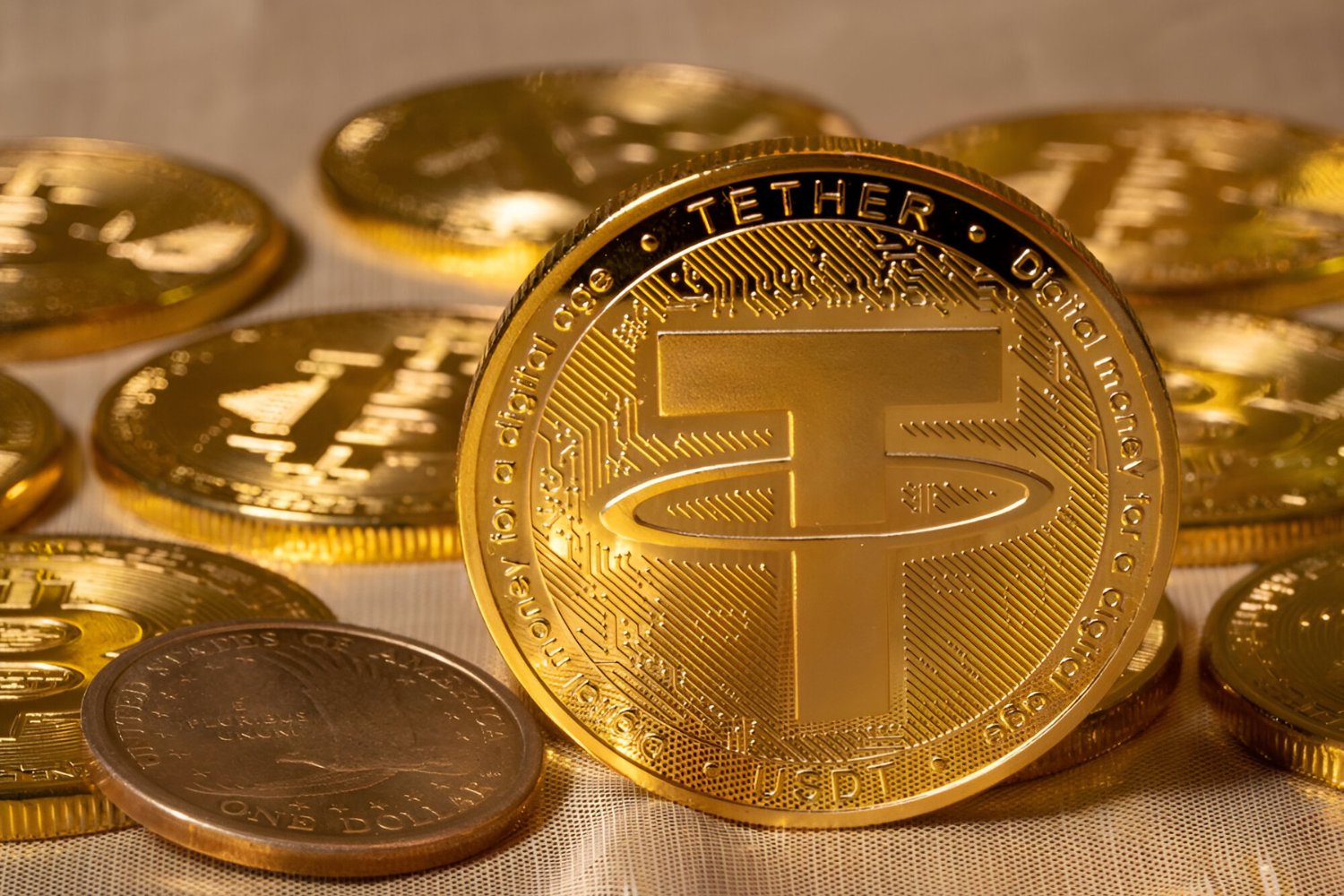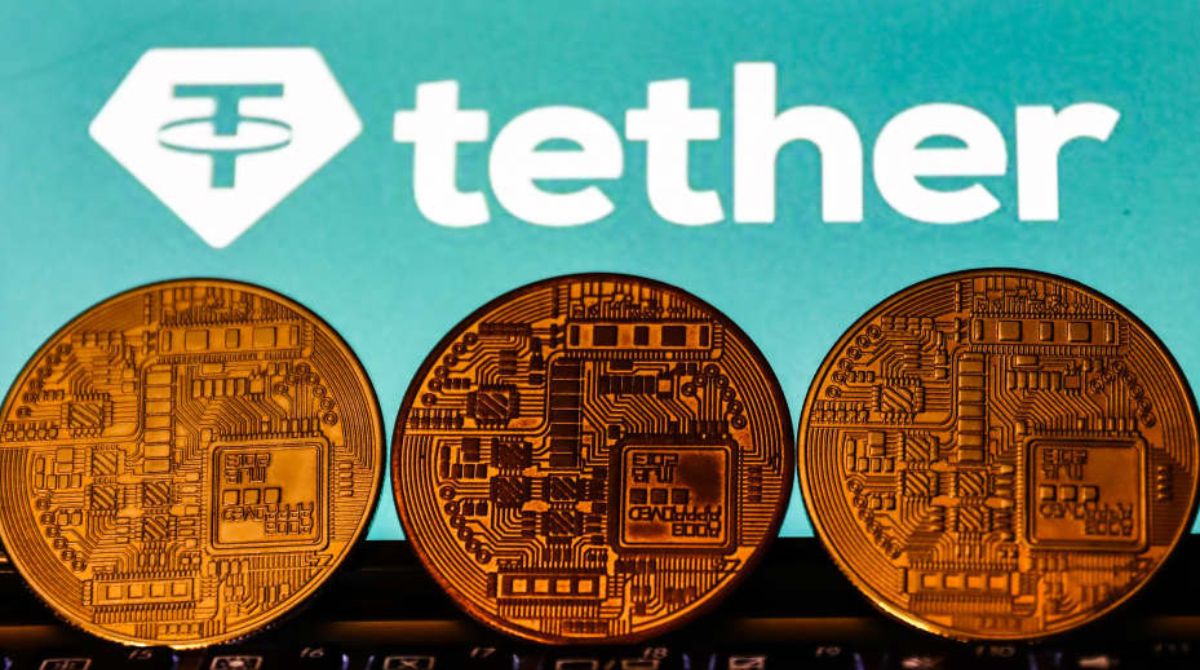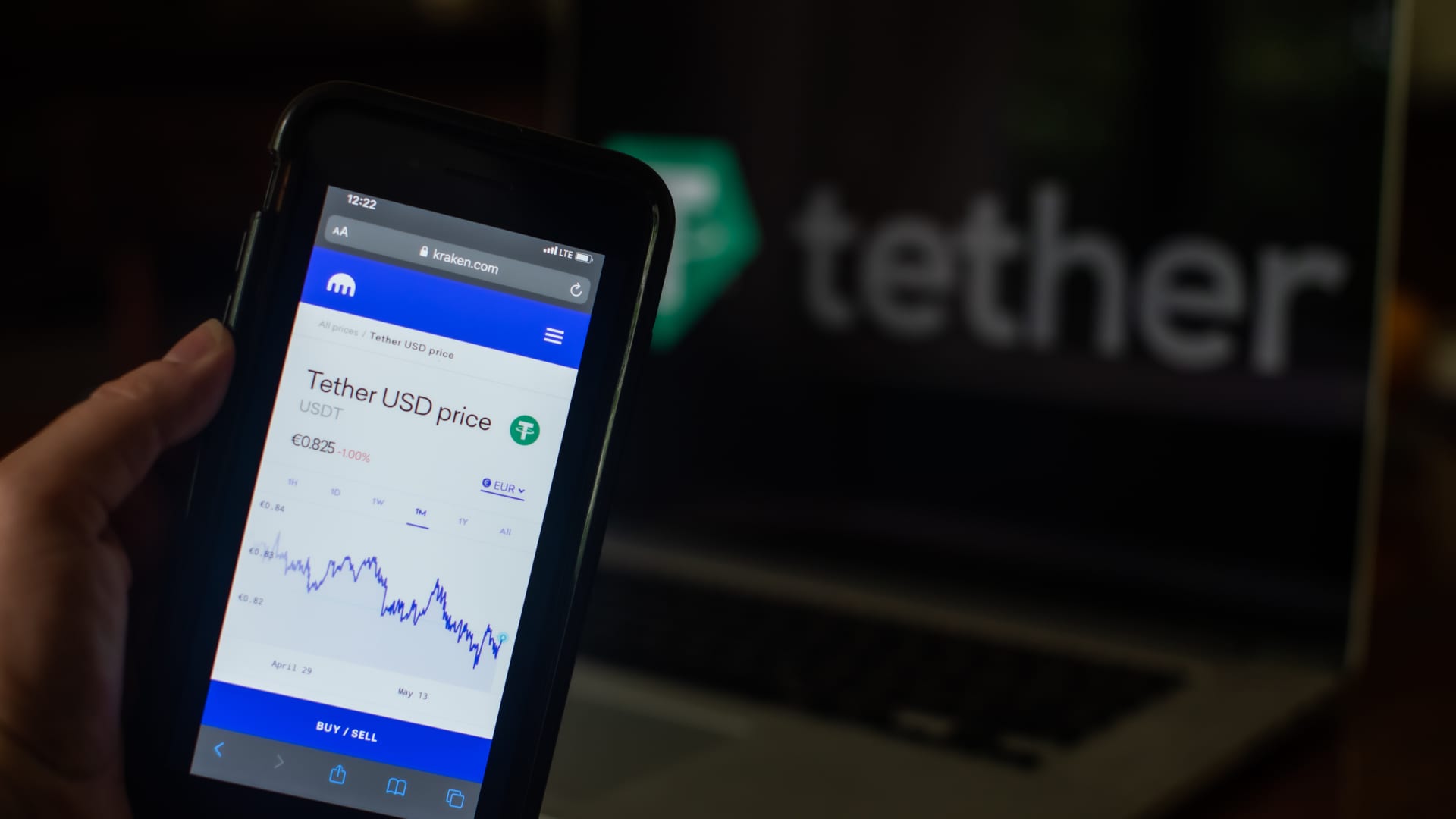Introduction
Welcome to the world of Tether, where the power of blockchain technology is harnessed to create a stable and secure digital currency. In this article, we will explore what Tether is, the concept of blockchain, and delve into the specific blockchain Tether utilizes. So, let’s dive in and uncover the fascinating world of Tether and blockchain!
Tether is a cryptocurrency that offers stability by being pegged to a traditional fiat currency, such as the US dollar. It was created to bridge the gap between the digital and traditional financial systems, providing users with the advantages of cryptocurrencies, such as fast and secure transactions, while still maintaining stability.
Now, you might be wondering, what exactly is blockchain? In simple terms, a blockchain is a decentralized digital ledger that records transactions across multiple computers. Each transaction is digitally signed and verified by a network of computers, known as nodes, ensuring the integrity and security of the data.
So, which blockchain does Tether use? Tether originally started on the Bitcoin blockchain as an omni-layer protocol. However, to keep up with the growing demand and ensure scalability, Tether has expanded to various blockchain platforms, including Ethereum, TRON, and Algorand. Each platform offers its own unique features and benefits, catering to different user needs.
Using blockchain technology has numerous advantages for Tether and its users. Firstly, blockchain provides transparency, allowing users to track and verify transactions in real-time. Additionally, blockchain offers enhanced security, as each transaction is encrypted, making it nearly impossible to alter or tamper with the data. This level of security is crucial for a digital currency like Tether.
Now that we understand the basics of Tether and blockchain, let’s take a closer look at how Tether’s specific blockchain works. Stay tuned as we uncover the inner workings of Tether’s blockchain and explore the transparency and security measures in place to protect users and ensure trust in this innovative digital currency.
What is Tether?
Tether is a unique digital currency that operates on the blockchain and is designed to provide stability in an otherwise volatile cryptocurrency market. It aims to offer the benefits of cryptocurrencies, such as fast and secure transactions, while maintaining a constant value by being pegged to a traditional fiat currency, typically the US dollar.
Tether was introduced in 2014 and was initially launched on the Bitcoin blockchain using the Omni Layer protocol. This allowed Tether to leverage the security and reliability of the Bitcoin network while providing a stable alternative for cryptocurrency users.
Unlike many other cryptocurrencies that see fluctuating values, Tether is designed to maintain a 1:1 ratio with the corresponding fiat currency it is pegged to. This means that one Tether token is always equal to one unit of the fiat currency, ensuring its stability.
One of the primary purposes of Tether is to act as a bridge between the traditional financial system and the world of cryptocurrencies. By providing a stable digital currency, Tether allows users to store and transfer value without being exposed to the high volatility of other cryptocurrencies.
Tether transactions are executed on the blockchain, which offers several advantages. The decentralized nature of the blockchain means that there is no central authority controlling Tether transactions. Instead, they are validated by a distributed network of computers known as nodes, which ensures the integrity and security of the transactions.
Furthermore, Tether transactions are processed quickly, allowing users to send and receive funds without the delays associated with traditional banking systems. This makes Tether an attractive option for individuals and businesses looking for efficient and cost-effective cross-border transactions.
It is important to note that Tether is backed by reserves of the corresponding fiat currency to ensure its stability. The company behind Tether, Tether Limited, claims to hold these reserves in secure bank accounts and undergoes regular audits to verify their holdings.
In summary, Tether is a stable digital currency that operates on the blockchain and is designed to provide stability in the cryptocurrency market. Its peg to traditional fiat currencies and its integration with the blockchain make it an attractive option for individuals and businesses looking for stability and efficiency in their digital transactions.
What is Blockchain?
Blockchain is a revolutionary technology that has transformed various industries and is at the core of many cryptocurrencies like Tether. Essentially, blockchain is a decentralized and distributed digital ledger that records transactions across multiple computers, known as nodes. These transactions are bundled together in blocks and linked sequentially in a chain formation, hence the name “blockchain”.
At its core, blockchain is built on three fundamental principles: decentralization, transparency, and security. Unlike traditional centralized systems, where a single entity has control over the data and its validation, blockchain operates on a decentralized network. This means that no single authority or organization has complete control over the data, making it more resistant to fraud and manipulation.
Transparency is another key characteristic of blockchain. All transactions recorded on the blockchain are visible to every participant in the network. This transparency not only promotes accountability but also allows for real-time verification and auditing of transactions, ensuring that data remains accurate and tamper-proof.
Blockchain technology provides robust security measures to protect the integrity of the data. Each transaction is cryptographically hashed and linked to the previous transaction, forming a chain of blocks. This makes it extremely difficult for any malicious actor to alter or tamper with the data, as it would require altering every subsequent block on the chain, which is computationally infeasible.
Furthermore, blockchain networks employ consensus mechanisms to validate and confirm transactions. Different blockchain platforms utilize various consensus algorithms, such as Proof of Work (PoW) used by Bitcoin, Proof of Stake (PoS) used by Ethereum, and Delegated Proof of Stake (DPoS) used by some other cryptocurrencies. These mechanisms ensure that transactions are verified and added to the blockchain in a secure and orderly manner.
In addition to its role in cryptocurrencies, blockchain technology has seen applications in various industries. It has the potential to revolutionize supply chain management, voting systems, intellectual property rights, and many more sectors where trust, transparency, and security are critical.
In summary, blockchain is a decentralized, transparent, and secure digital ledger that records transactions across multiple computers. It provides a foundation for cryptocurrencies like Tether, as well as a wide range of applications in different industries. With its potential to transform existing systems and enhance trust, blockchain is poised to shape the future of technology and finance.
Which Blockchain Does Tether Use?
Tether, being one of the leading stablecoins, has expanded its presence beyond its initial launch on the Bitcoin blockchain. While originally built on the Omni Layer protocol, Tether has embraced multiple blockchain platforms to meet the growing demand and ensure scalability. Let’s explore the different blockchains Tether utilizes and the benefits they offer.
One of the prominent blockchains that Tether operates on is Ethereum. By leveraging Ethereum’s smart contract capabilities, Tether has been able to offer its stablecoin as an ERC-20 token. This allows users to easily integrate Tether into various Ethereum-based applications, such as decentralized exchanges and decentralized finance (DeFi) protocols, enriching the usability of Tether.
Tether has also ventured into the TRON network, which offers fast and scalable transactions. With TRON, Tether users can enjoy low-cost transactions and quick settlement times. The collaboration between Tether and TRON aims to enhance the accessibility and efficiency of stablecoin transactions within the TRON ecosystem.
Additionally, Tether has integrated with the Algorand blockchain, known for its high transaction throughput and security. Algorand’s pure proof-of-stake consensus mechanism ensures decentralized participation and fast finality, making it a suitable platform for Tether to provide secure and efficient transactions.
Each blockchain platform that Tether utilizes brings unique benefits. Ethereum’s widespread adoption and advanced smart contract functionalities offer a broad range of opportunities for Tether integration. TRON’s focus on scalability and user-friendly experience provides a seamless environment for Tether transactions. Meanwhile, Algorand’s commitment to security and performance reinforces the trust and reliability of Tether transactions.
This multi-chain approach adopted by Tether demonstrates its commitment to adapt to the evolving needs of cryptocurrency users. By bridging various blockchain ecosystems, Tether aims to reach a wider user base, provide increased liquidity, and enhance the overall utility and accessibility of its stablecoin.
It’s worth noting that Tether’s expansion to different blockchains does not mean it is exclusive to these platforms. Tether’s integration with additional blockchain networks may occur in the future, further diversifying its reach and catering to different user preferences.
In summary, Tether has extended its presence beyond the Bitcoin blockchain and embraced various blockchain platforms like Ethereum, TRON, and Algorand. Each blockchain offers distinct advantages, allowing Tether users to benefit from enhanced usability, scalability, and security. This multi-chain strategy highlights Tether’s commitment to constantly evolve and meet the demands of the ever-changing cryptocurrency landscape.
Benefits of Using Blockchain for Tether
The integration of blockchain technology has brought numerous advantages to Tether, the stablecoin that operates on various blockchain platforms. Let’s explore the benefits that blockchain provides for Tether and its users.
Transparency: Blockchain technology offers transparency by providing a decentralized and publicly accessible ledger of transactions. Every Tether transaction is recorded on the blockchain, allowing users to track and verify each transaction in real-time. This transparency promotes trust and accountability, as users can independently verify the movement of Tether tokens, ensuring the stability and integrity of the stablecoin.
Security: Security is a vital aspect of any digital currency, and blockchain technology excels in this area. Tether utilizes the cryptographic properties of blockchain to ensure the security of its transactions. Each transaction is encrypted and linked to the previous transaction, forming an unbroken chain of verified and immutable records. This makes it extremely difficult for malicious actors to tamper with or alter the transaction history, enhancing the security and trustworthiness of Tether.
Efficiency: Blockchain technology enables fast and efficient transactions. Tether transactions are processed on the blockchain, allowing users to send and receive funds seamlessly. Compared to traditional banking systems, which often involve intermediaries and delays, blockchain technology expedites transactions, providing a convenient and cost-effective alternative for individuals and businesses.
Global Accessibility: With blockchain technology, Tether has gained global accessibility. As Tether operates on various blockchain platforms, users from around the world can access and use Tether regardless of their location. This global accessibility removes barriers and facilitates cross-border transactions, enabling individuals and businesses to transact freely and efficiently without restrictions imposed by traditional financial systems.
Interoperability: The integration of Tether on multiple blockchain platforms enhances interoperability. Tether’s presence on different blockchains, such as Ethereum, TRON, and Algorand, allows users to seamlessly transfer Tether tokens between different platforms, expanding its usability and reach. This interoperability fosters a more connected and inclusive ecosystem, enabling users to leverage the benefits of Tether across various blockchain networks.
Scalability: Blockchain technology provides scalability for Tether. As the demand for Tether continues to grow, the ability to operate on multiple blockchain platforms allows Tether to handle a larger volume of transactions without sacrificing efficiency or network performance. This scalability ensures that Tether can meet the needs of its expanding user base and provide a seamless experience even during periods of high demand.
In summary, the integration of blockchain technology has significantly contributed to the success and enhanced the features of Tether. The transparency, security, efficiency, global accessibility, interoperability, and scalability offered by blockchain make Tether a robust and reliable stablecoin suitable for various use cases, ranging from everyday transactions to more complex financial operations.
How Does Tether’s Blockchain Work?
Tether’s blockchain operates on different platforms, but the underlying principle remains consistent across all implementations. Let’s explore how Tether’s blockchain works and the key elements that make it function effectively.
Tether’s blockchain functions as a decentralized digital ledger that records every transaction involving Tether tokens. When a user initiates a transaction, it is broadcasted to the network of nodes that support the blockchain. These nodes, which can be individuals or organizations, collectively validate and verify the transaction.
The validation process on Tether’s blockchain typically utilizes a consensus mechanism, which determines how transactions are verified and added to the blockchain. Depending on the platform Tether operates on, different consensus mechanisms like Proof-of-Work (PoW), Proof-of-Stake (PoS), or Delegated-Proof-of-Stake (DPoS) may be employed.
Once a transaction is validated, it becomes part of a block. Blocks are then added to the blockchain in a sequential order, forming an immutable and transparent transaction history. Each block contains a cryptographic link to the previous block, creating a chain that ensures the integrity and security of the data.
In the case of Tether, each transaction involves the transfer of Tether tokens from one wallet address to another. These transactions are recorded on the blockchain and can be publicly viewed by anyone participating in the network.
One crucial aspect of Tether’s blockchain is the concept of tether reserves. Tether claims to have backing reserves in traditional fiat currencies to ensure the stability and value of each tether token. These reserves are held in secure bank accounts and are audited to provide transparency and assurance to holders of Tether.
Tether’s blockchain operates 24/7, ensuring that transactions can be executed at any time, providing users with the flexibility and convenience they desire. The decentralized nature of the blockchain eliminates the need for intermediaries and allows for direct peer-to-peer transactions, reducing costs and increasing efficiency.
The benefits of Tether’s blockchain extend beyond its core functionality. For example, on platforms like Ethereum, users can leverage smart contracts to enhance the capabilities of Tether. These smart contracts can automate certain processes, enable conditional payments, or facilitate the integration of Tether into decentralized applications.
In summary, Tether’s blockchain functions as a decentralized ledger that records and validates transactions involving Tether tokens. The use of consensus mechanisms, cryptographic links, and tether reserves ensures transparency, security, and stability within the blockchain. Tether’s blockchain operates continuously, providing users with a fast, efficient, and direct method for executing transactions and opening up possibilities for further integration with smart contracts on certain platforms.
Transparency and Security of Tether’s Blockchain
Tether’s blockchain is designed to provide a high level of transparency and security for users engaging with the stablecoin. Let’s delve into how Tether’s blockchain ensures transparency and security, creating a trustworthy environment for transactions.
Transparency is a fundamental characteristic of Tether’s blockchain. Every transaction involving Tether tokens is recorded on the blockchain and is publicly accessible. This means that users can view the transaction history, track the movement of Tether tokens, and verify the accuracy of each transaction. The transparent nature of Tether’s blockchain fosters trust among users, as they have the ability to independently audit and validate the flow of Tether tokens.
In addition to transaction transparency, Tether has taken steps to establish financial transparency. The company claims to maintain a one-to-one correspondence between the Tether tokens in circulation and the reserves held in traditional fiat currencies. Regular audits are conducted by external firms to verify the accuracy and existence of these reserves, providing an additional layer of transparency and assurance to users.
Security is paramount in the operation of Tether’s blockchain. The use of cryptographic algorithms ensures that each transaction is encrypted and secure. The immutability of blockchain technology prevents tampering or alteration of transaction records, providing a high level of trust and security for users. The decentralized nature of Tether’s blockchain also adds an extra layer of security, as there is no single point of failure or control.
Furthermore, Tether collaborates with reputable blockchain platforms, such as Ethereum, TRON, and Algorand, to leverage the security measures inherent in these platforms. These blockchains have established their own protocols and consensus mechanisms, which contribute to the overall security of Tether’s blockchain operations. For example, Ethereum’s proven track record in security and smart contract capabilities enhances the security of Tether transactions carried out on the Ethereum network.
Tether also takes measures to ensure the security of user wallets and accounts. Users are encouraged to follow best practices in securing their private keys, including using hardware wallets or secure storage solutions. Tether employs strict security protocols and practices to protect user data and prevent unauthorized access to wallets and accounts.
The combination of transparency and security in Tether’s blockchain ecosystem contributes to the overall stability of the stablecoin. By providing a transparent view of transactions and the backing reserves, users can have a higher degree of confidence in the value and integrity of Tether tokens. The secure infrastructure of Tether’s blockchain network mitigates the risks associated with fraud, manipulation, and unauthorized access, providing a secure environment for users to transact with confidence.
In summary, Tether’s blockchain ensures transparency by recording every transaction publicly and maintains financial transparency through regular audits. The cryptographic security measures employed in Tether’s blockchain, along with collaborations with secure blockchain platforms, protect the integrity and confidentiality of transactions. The combination of transparency and security in Tether’s blockchain ecosystem creates a trustworthy environment for users to transact with confidence, fostering trust and stability within the stablecoin market.
Conclusion
Tether, the stablecoin that operates on various blockchain platforms, has revolutionized the cryptocurrency space by providing stability, transparency, and security to users. Through the power of blockchain technology, Tether has become a trusted and widely adopted digital currency.
We have explored the concept of Tether, a stable digital currency pegged to traditional fiat currencies. Tether’s integration of blockchain technology has enabled fast and secure transactions, making it an appealing option for users seeking stability in the volatile cryptocurrency market.
Blockchain, the decentralized digital ledger, plays a crucial role in the functioning of Tether. It ensures transparency by recording transactions on the blockchain, allowing for real-time verification and tracking. Tether’s blockchain also offers robust security measures, utilizing cryptographic algorithms and decentralized validation to protect the integrity of data and prevent tampering.
Furthermore, Tether’s multi-chain approach, operating on platforms such as Ethereum, TRON, and Algorand, enhances its usability, scalability, and global accessibility. This ensures that users can seamlessly transact with Tether across various blockchain ecosystems, opening up opportunities for integration into decentralized applications and facilitating efficient cross-border transactions.
The transparency and security provided by Tether’s blockchain build trust and confidence among users. The company’s commitment to financial transparency, backed by regular audits of its reserves, instills further assurance in the stability of Tether tokens.
In conclusion, Tether’s utilization of blockchain technology has unlocked countless benefits for users, ranging from stability and transparency to heightened security and global accessibility. Tether’s integration with various blockchain platforms establishes a solid foundation for the stablecoin’s seamless operation and continued growth. As the cryptocurrency landscape evolves, Tether remains at the forefront, harnessing the power of blockchain to provide stability in a decentralized and borderless financial world.







